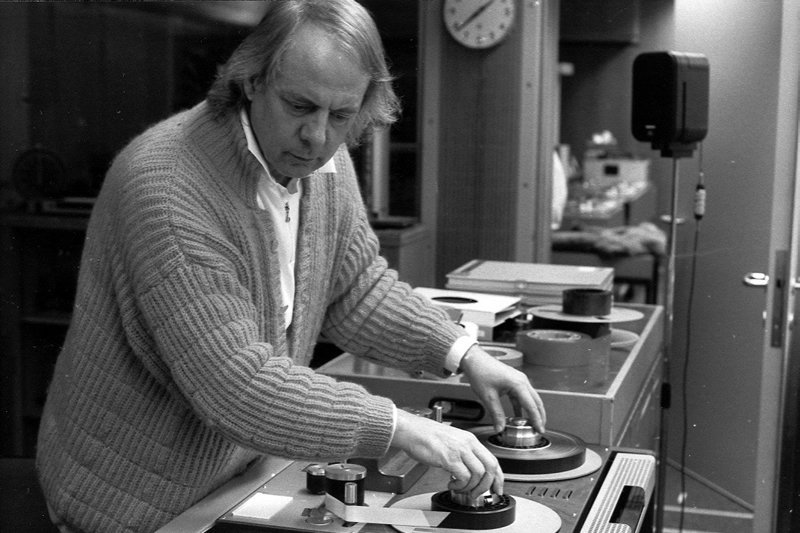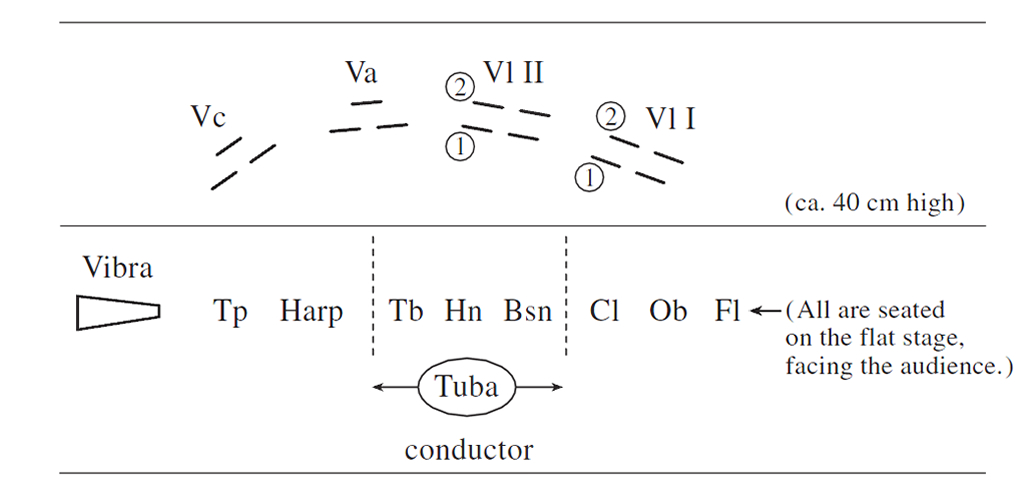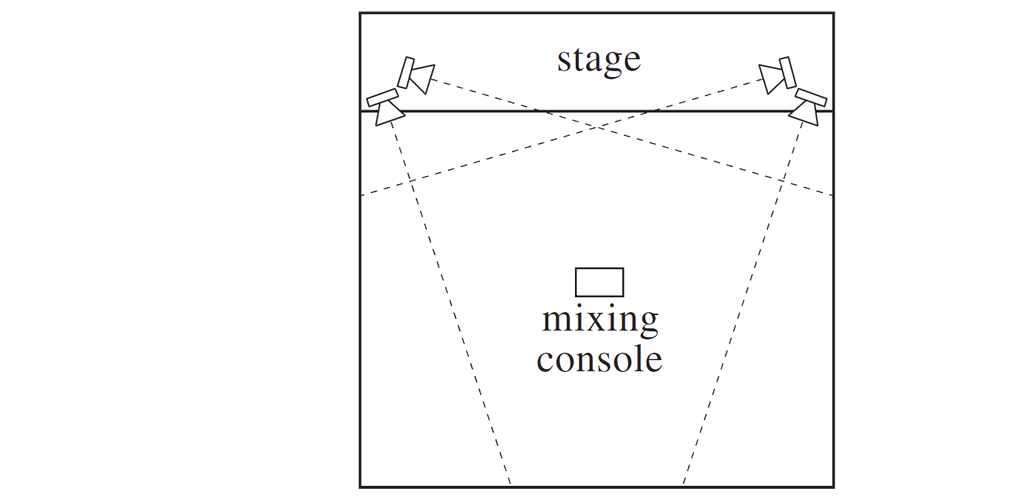
Instrumentation Works for Orchestra
Stockhausen Complete Edition on CD
Since 1991, a complete edition of all recordings in which Karlheinz Stockhausen has personally participated is being released on compact discs. Each CD in this series is identified by Stockhausen's signature followed by an encircled number. The numbers indicate the general historical order of the works.
Stockhausen realised the electronic music and participated in these recordings as conductor, performer, sound projectionist, and musical director. He personally mixed down the recordings, mastered them for CDs, wrote the texts and drew the covers.
- The compact discs may be obtained from the Stockhausen-Verlag: Kettenberg 15, 51515 Kuerten, Germany (www.stockhausenCDs.com).
Karlheinz Stockhausen
Instrumentation Works for Orchestra
FIVE MORE STAR SIGNS
Introduction
FIVE MORE STAR SIGNS
for Orchestra
(duration circa 21 minutes)
It was composed in 2007, commissioned by the R. Accademia Filarmonica di Bologna (Italy). Oliver Knussen conducted the world première on September 16th 2008 at the Teatro Manzoni in Bologna with the Orchestra Mozart.
The instrumentation is:
flute (also piccolo), oboe, clarinet, bassoon,
horn, trumpet, trombone,
tuba (Kaiserbass)
harp,
one percussionist: vibraphone, gong 
1st violins (4), 2nd violins (4),
violas (3), violoncelli (3).
At the world première, a performance of FÜNF STERNZEICHEN (FIVE STAR SIGNS) for Orchestra (VIRGO, LIBRA, SCORPIO, SAGITTARIUS, CAPRICORN),
Work No. 41 11/12 , with a duration of 11 minutes, directly preceded
the world première of FÜNF WEITERE STERNZEICHEN (FIVE MORE STAR SIGNS), which followed without interruption. If both works are performed in succession, then
FIVE STAR SIGNS is also performed with 3 violas (instead of 2) and 3 violoncelli (instead of 2), and the orchestra is seated according to the drawing below. These 10 stars signs, entitled TIERKREIS (ZODIAC) for orchestra have a total duration of ca. 32 minutes.
Performance Practice
Making a diminuendo at the end of a note and especially at the end of a melodic phrase – which stems from the traditional performance practice – should be avoided by all means. Fragments of melodies should always directly
follow one another and lead into one another.  and
and  should never be shortened or played staccato unless it is explicitly prescribed by a dot above the note.
should never be shortened or played staccato unless it is explicitly prescribed by a dot above the note.
Although strings do not like to sit in reverse order, the violoncelli and violas should sit at the left (as seen by the audience) and violins II and I should sit at the right, elevated about 40 cm.
The instrumentation is for single winds who sit on the flat stage in front of the strings facing the audience (not facing each other), so that they may be heard well.
The tuba player enters only for his solo (TAURUS) and moves in front of the ensemble according to the instructions in the score.
The harp is also seated facing the audience (i.e. not turned 90°), in front of the strings as may be seen in the following drawing:

The metronome tempi are very important for the characters of the star signs and must be precisely played.
The percussionist plays a gong and vibraphone. The mallets for the vibraphone are chosen together with the conductor. Every attack should be clearly heard, i.e. mallets which are on the hard side should be chosen rather than ones which are too soft. For TAURUS there is an ossia in the vibraphone part with only 4 notes per chord in case the player can only play with 4 mallets. The vibraphone part should never be played by two percussionists.
The harp should, if possible, be amplified.
In large halls, the entire orchestra should be amplified with for example 4 microphones (hung or on stands in front of the orchestra) and projected over 2 x 2 loudspeakers (ca. 4.5 metres high) at the left and right on the stage. The dynamic balance is adjusted during the performance by the sound projectionist, who sits at a small mixer in the middle of the hall.

Notation
An accidental  or
or  applies to the one note it precedes;
applies to the one note it precedes;  serve as aids to reading.
serve as aids to reading.
All pitches sound as notated. The parts for clarinet in B-flat and horn in F are transposed.
The trumpet needs a wawa mute W , a cup mute C , a straight mute S and a WHISPER mute
W :  = nearly closed with hand,
= nearly closed with hand,  = hole of the mute open,
= hole of the mute open,
 = gradually close
= gradually close  = gradually open.
= gradually open.
( ) = half-valve.
The trombone also needs a wawa mute W and a cup mute C.
 = remove mute.
= remove mute.
 = The attack of an accent should only briefly be one degree louder than the
= The attack of an accent should only briefly be one degree louder than the
dynamic notated
 = staccato is always short, regardless of the note value above or below
= staccato is always short, regardless of the note value above or below
which it stands. Notes without staccato should never be shortened.
 = A glissando begins immediately with the note, falls
= A glissando begins immediately with the note, falls
or climbs regularly without decrescendo or crescendo
and lasts for the entire notated duration.
 = tremolo. Contrary to conventional notation for
= tremolo. Contrary to conventional notation for
tremolos, the duration of the tremolo is indicated by
the note value of the 1st note, and the 2nd note of
the tremolo has no note value (like trills). All trills
and tremolos begin and end with the first pitch.
Both pitches should always be equally loud.
 = caesura within the notated duration.
= caesura within the notated duration.
 = caesura added to the measured time.
= caesura added to the measured time.
accel. = speed up to about double tempo.
rit. = slow down to about half tempo.
molto rit. = slow down even more (for example to quarter tempo).
STOP = (ARIES bars 38, 46, 55) indicates an abrupt interruption.
The length of each silence is decided by the conductor and
can be between 3 and 8 seconds long.
 = indication of the tuba player's movements
= indication of the tuba player's movements = conductor,
= conductor, = orchestra).
= orchestra).